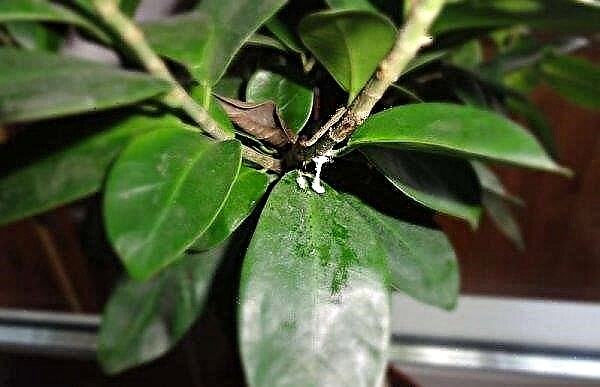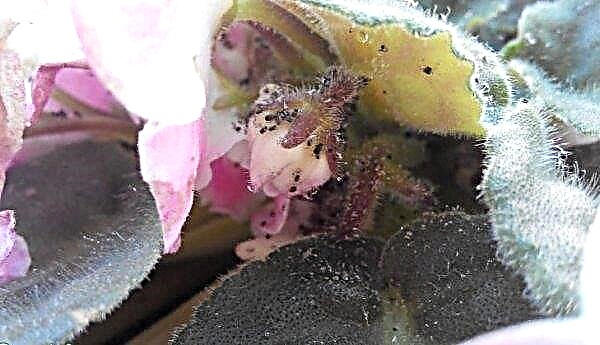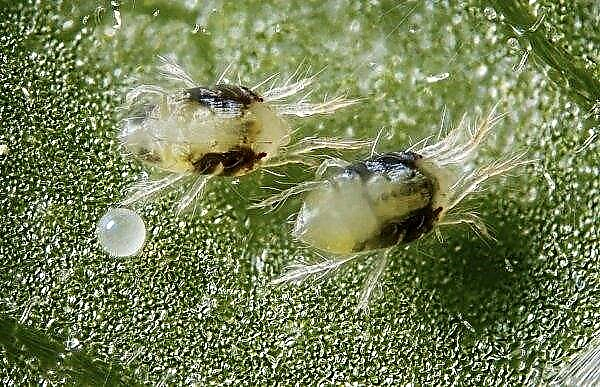Orchids are flowers that leave no one indifferent. They are created to be admired. Not every plant can boast of such a variety of shapes and colors. Cattleya stands out among the Orchid family, known not only for its bright flowers, but also for its enchanting aroma. Read more about this plant later in the article.
Botanical description of the plant
In nature, Cattleya grows mainly in South and Central America. It can grow on tree trunks, entwining them with roots, or on stones. The flowers of this orchid are varied in color and size: they can be very small - up to 5 cm in diameter, and there can be as many as 22 cm. A distinctive feature of Cattleya flowers is that their lower lip is brighter than the other petals. In appearance, the flower resembles an iris. Color can be both white, and all shades of pink and purple, and even almost black. The aroma of an orchid resembles the smell of lily of the valley or lily, depending on the variety.
The plant stem grows from a pseudobulb - an air tuber of an orchid, in which water and nutrients are accumulated and stored. In nature, the Cattleya stem can grow up to 1.5 m, but in hybrids that are grown at home, it usually has a height of 15-30 cm. The leaves are juicy green, fleshy, long. Depending on the type of plant, 1 leaf or 2 can grow.
| Root system | Aerial |
| Stem | Up to 50 cm |
| Leaf shape | Narrow, fleshy |
| Leaf color | Green |
| Flower shape | Collected in brush |
| Flower color | Diverse |
| Fetus | Box |
Varieties
In the world there are about 65 varieties of wild Cattleya and 40 cultivated artificially.
Here are the most popular ones:
- Bowring - can bloom at any time of the year. The flowers are small, up to 5 cm in diameter, pink with purple tint.

- Two-tone - differs in large flowers with a diameter of up to 10 cm. Petals are pink or purple with brown, and the lip is bright purple.
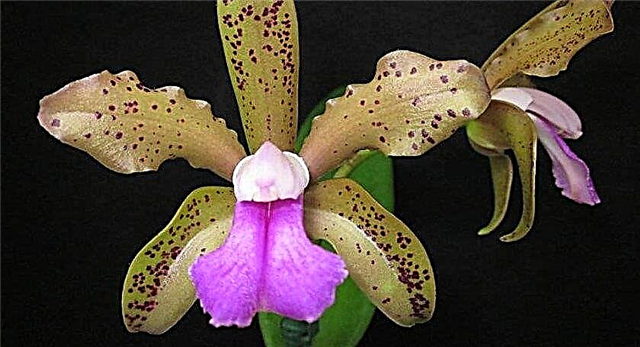
- Lip - the color is varied, from pale yellow to pink. The stem is high enough - 25 cm. The flowers are large, up to 15 cm.

- Valkeriana - has bright red flowers up to 10 cm in diameter. It can grow on stones.
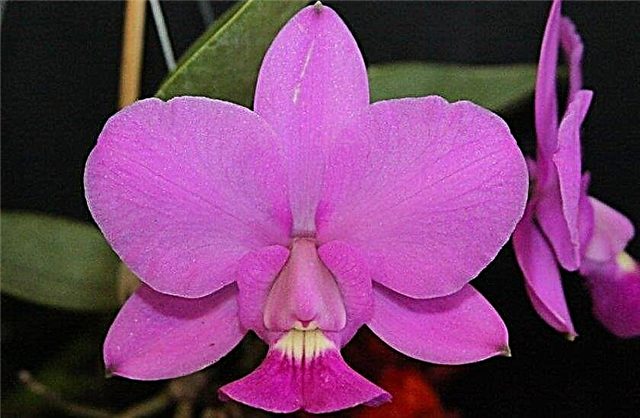
- Forbesa - miniature, up to 20 cm tall. Olive flower with white lip.

House growing conditions
This beauty loves attention and care, so if you decide to have a Cattleya at home, you need to stock up with the necessary knowledge and patience.
Lighting
Like all residents of the tropics, this beauty loves the light. It’s best to have the lighting in the morning. Therefore, it is best to place it on the east and south-east windows, on balconies. Only in the summer should the window be shaded so that the plant does not receive burns under the scorching rays.
Important! Despite its pronounced aroma, Cattleya does not cause allergies, so even allergy sufferers can safely give the flower.
Ventilation
All orchids need fresh air, so the windows in the room with these plants need to be opened as often as possible. But at the same time, drafts and sharp fluctuations in temperature should be avoided. In summer, Cattleya will feel good on the open, slightly shaded terrace or on the balcony. In winter, you’ll have to tinker, because if the windows open for ventilation, the flowers need to be removed so that they do not freeze.
Temperature mode
For Cattleya in the spring-summer period the room temperature will be comfortable +22 ... + 24 ° С. And in winter the room should be cooler - +18 ° C. The impetus for the flowering of this species of orchids is precisely the temperature difference of 6–7 ° С.
Air humidity
Normal humidity when growing this flower is up to 60%. The plant loves spraying, you need to do them with a little warm water. Cattleya leaves should be wiped from time to time with special wet wipes for orchids.
Home Care
In order to achieve magnificent and prolonged flowering from the Cattleya, it is necessary to know the basic rules for caring for it.
Watering
The amount of water for irrigation depends on the period of development of the orchid: if it is flowering, then watering should be more plentiful, and moderate during rest periods. To determine the need for watering, you need to carefully inspect the soil. If it is dry on top, then watering is required.
Cattleya is not watered in the literal sense of the word. A flowerpot with an orchid needs to be lowered into a container with room water and hold for 5 minutes. Or you can put a flowerpot on a pallet with expanded clay and pour water into it. Water should not fall on leaves when watering.
Video: when to water and fertilize Cattleya orchid
Top dressing
Orchids require special fertilizers with a high content of phosphorus and potassium. Flower shops sell special fertilizers for orchids, which should be used. It is necessary to feed the plant during the period of growth of pseudobulbs and during the formation of buds. When the cattleya has already bloomed, feeding is stopped.
Did you know? The cost of the world's most expensive orchid reaches $ 5,000, and it is called "Kinabalu Gold." It grows in Malaysia. It blooms for the first time at the age of 15, therefore it is considered a very rare flower. The petals of this orchid look like a green mustache, and the lip is bright red.
Transfer
The plant does not need frequent transplantation and does not tolerate it well. As a rule, this procedure should be done 1 time in 2 years - as the soil oxidizes. This can be determined visually: if the roots filled the entire pot, and the soil began to mold, then transplants can not be avoided. When transplanting, the cattleya must be carefully removed from the tank, shake off the soil from the roots and placed in a new substrate.
Video: Cattleya Orchid Transplant
For orchids, transparent plastic containers are best suited, which transmit light to the roots and make it possible to monitor the condition of the soil. Orchid soil should consist of pieces of processed pine bark, sphagnum moss and peat. Also, drainage should be laid at the bottom - charcoal or expanded clay. Such soil passes air well.
Important! Before planting, the roots of the cattleya must be soaked in soft, settled water at room temperature so that they do not break during planting. Aerial roots that were on top should never be removed.
Special period
Like any flowering plant, Cattleya have periods of flowering and dormancy, which are characterized by different care requirements.
Bloom
For flowering for an exotic beauty, the appropriate conditions are needed:
- Cattleya will delight in flowers, provided that she will have enough sunlight. On the north window of flowers you can not wait from her. At the same time, the sun should not be scorching.
- Be sure to give the plant enough moisture and fertilizing for the summer period. If it grows actively, then it will bloom abundantly.
- Another guarantee of flowering is the difference in day and night temperatures by 5–6 ° С. To do this, it is better to take the orchid to the balcony.
- When the buds have already opened, the flower must be moved deep into the room, away from the sun. This will prolong flowering.

Peace
After flowering, the cattleya should rest and regain strength. She will not bloom again if she does not have enough rest during the rest period. Most often, this period begins in winter, although in some species it can be at other times of the year.
When the cattleya fades, it should be rearranged in a cool place without access to bright light. During dormancy, it is not necessary to fertilize it, and watering must be reduced to 1 time in 14 days or even less. It is necessary to ensure that the pseudobulbs do not wrinkle and do not dry out.
Did you know? The name "orchid" in Greek means "testicle" and arose due to the similarity of pseudobulbs with this part of the body.
Breeding
Orchids breed well at home. To successfully breed Cattleya, you just need to know how to do it right.
Cattleya propagation methods:
- dividing the bush;
- processes, children.
Division
You can divide the bushes, which have 7-8 pseudobulbs. To do this, you need to remove the plant from the pot, lower the roots into the water for 30 minutes and then untangle them in the water. Next, with a sharp secateurs, divide the bush so as not to catch the pseudobulbs. Slices must be sprinkled with crushed coal, and the roots should be dried in a warm place. Next, the plant needs to be planted in prepared soil for orchids. It can be pre-soaked in water for 5 minutes and watering after planting is not necessary.
Kids
Orchid kids grow right on the stem and take root roots. Separate children only after flowering plants. To do this, you need to carefully cut them with a secateurs, treat the cut points with crushed activated carbon or brilliant green. After this, the process can be planted in a new container.
Growing problems
Unfortunately, Cattleya beauty is quite often affected by various fungal and bacterial infections that occur with improper care.
- Root rot and bacteriosis. If you notice brown spots on the leaves or pseudobulbs, the roots are brownish-yellow in color - the plant needs to be urgently saved. To do this, remove the flower from the pot, with a sharp knife, remove all infected parts of the plant. Treat the cut points with brilliant green or crushed activated carbon (can be ash). Treat the plant with an antifungal drug and plant the cattleya in a new pot with a fresh substrate.

- Poor root growth. Without building up the root system, the Cattleya will not fully develop and share. If the roots do not grow well, this indicates that the orchid does not have enough light. It is necessary to rearrange it in a brighter place, to provide watering and top dressing with growth stimulants.
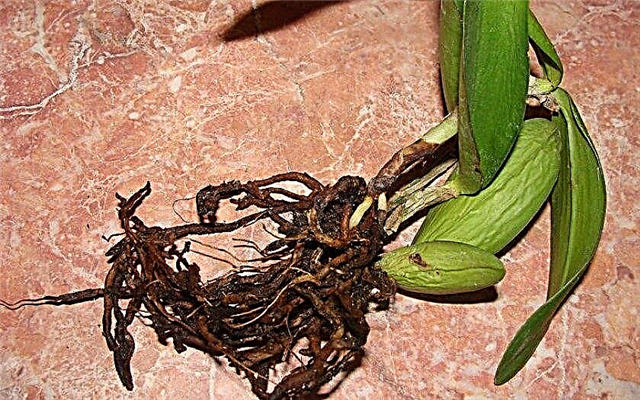
- Chlorosis - A disease caused by a lack of iron. On the leaves you can see yellow stains. It is necessary to change the soil, since due to the accumulation of salts, iron is not absorbed. Also, for irrigation, you should take only soft and settled water.

- Of pests for Cattleya, scale insects and spider mites are dangerous. If insects are found, they must be washed off with a wet sponge and treated with an insecticide.

Cattleya can be a real decoration for any home. And although she is capricious, she will definitely reward her flowering for all the time spent on her. Before you get such a flower, you must definitely study all the information about it, and then your costs and efforts will not be in vain.












